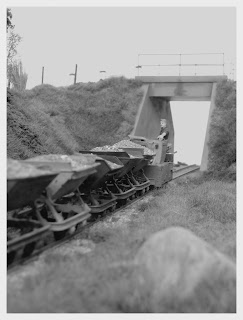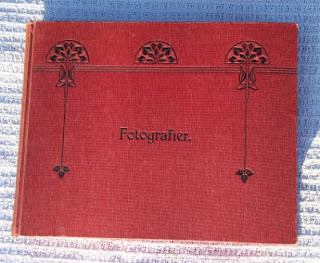Most railways have a quiet spot where fitters, workmen and loco drivers can have a break. Nystrup Gravel is no exception. Behind the loco shed outside Nystrup there is a small spot where a motley collection of old furniture enables tired or idle employees of Nystrup Gravel to catch their breath or a little nap and still getting paid…
 |
| A place that invites to a rest in a busy work day. Two empty beer bottles on the bench indicates some recent pausing. |
 |
| Seen from the other side of the tracks. The loco shed is just out of the picture to the right. |
At the other end of the module I'm currently working on a wooden fence and grass planting is in progress around the bridge and stream.
















